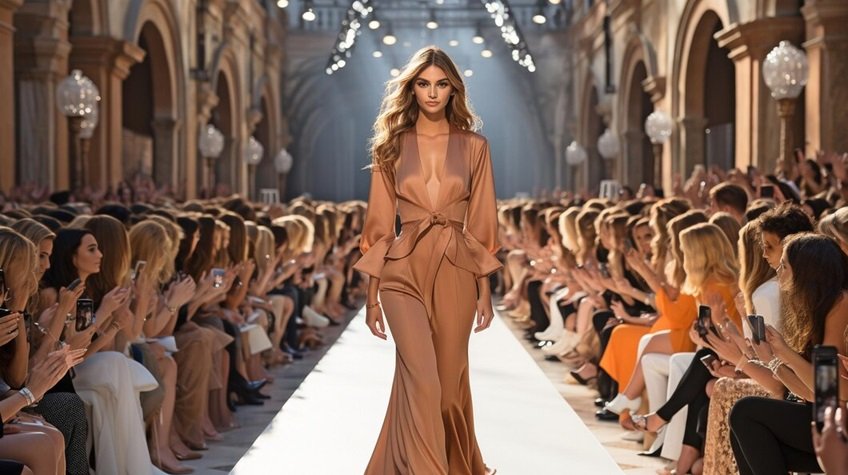Milan Fashion Week stands as one of the most prestigious and influential fashion events in the world. Held twice a year, this glamorous showcase, part of the global “Big Four” fashion weeks, unveils the latest trends, designs, and talents that shape the future of fashion. As Milan, Italy’s fashion capital, hosts an array of runway shows, presentations, and exclusive events, it attracts top designers, celebrities, fashion editors, and industry insiders from around the globe. This article delves into the essence of Milan Fashion Week, exploring its history, significance, and the trends that have emerged from this iconic event.
The Legacy of Milan Fashion Week
Milan Fashion Week, officially known as “Settimana della Moda,” has a rich history that reflects Italy’s deep-rooted influence on the global fashion industry. The event’s origins trace back to the early 20th century, but it wasn’t until the 1950s that Milan began to establish itself as a fashion hub. Influential designers such as Giorgio Armani, Versace, and Prada played pivotal roles in elevating Milan’s status as a center for high fashion.
The official schedule for Milan Fashion Week, which showcases both men’s and women’s collections, typically spans a week in February for the Fall/Winter collections and September for the Spring/Summer collections. The event is organized by the Camera Nazionale della Moda Italiana (CNMI), an organization dedicated to promoting Italian fashion and supporting its designers.
Key Elements of Milan Fashion Week

1. The Runway Shows
The heart of Milan Fashion Week lies in its runway shows. Top fashion houses, emerging designers, and luxury brands present their latest collections to an audience of buyers, press, and celebrities. Each show is a carefully orchestrated performance that highlights the designer’s creative vision, from innovative silhouettes to exquisite fabrics. The runway presentations are not merely fashion showcases; they are a blend of art, theater, and storytelling.
2. Emerging Designers and Talent
While established names like Dolce & Gabbana and Valentino dominate the headlines, Milan Fashion Week is also a vital platform for emerging designers. These up-and-coming talents often receive opportunities to showcase their collections alongside industry giants, gaining exposure and recognition. Milan has been instrumental in launching the careers of numerous designers who have gone on to achieve global acclaim.
3. Exclusive Presentations and Events
Beyond the runway shows, Milan Fashion Week is filled with exclusive presentations, parties, and networking events. Designers often host private viewings of their collections for select guests, allowing for a more intimate and detailed exploration of their work. These events are crucial for fostering relationships between designers, buyers, and media, and often set the stage for future collaborations and opportunities.
The Impact of Milan Fashion Week on Global Trends

Milan Fashion Week is a key influencer in setting global fashion trends. The collections presented often reflect broader cultural and social shifts, providing insights into the direction of fashion for the upcoming season. Here are some key trends that have emerged from recent Milan Fashion Weeks:
1. Sustainability
Sustainability has become a significant focus in recent seasons, reflecting the fashion industry’s growing commitment to environmental responsibility. Many designers are incorporating eco-friendly materials, sustainable production practices, and ethical sourcing into their collections. Milan Fashion Week has seen an increase in presentations that emphasize the importance of reducing fashion’s ecological footprint.
2. Revival of Classic Styles
Milan Fashion Week often revisits and reinvents classic styles, blending traditional aesthetics with contemporary elements. Designers frequently draw inspiration from historical fashion, integrating vintage influences into modern designs. This revival of classic styles often results in collections that pay homage to fashion’s rich heritage while remaining relevant to current tastes.
3. Bold and Innovative Designs
Italian designers are renowned for their creativity and boldness, and Milan Fashion Week is a testament to this reputation. Recent collections have showcased experimental silhouettes, vibrant colors, and intricate detailing. The emphasis on innovation is not just about aesthetics but also about pushing the boundaries of fashion design and craftsmanship.
4. Gender Fluidity
The concept of gender fluidity has gained prominence in recent years, and Milan Fashion Week has embraced this shift. Designers are increasingly presenting collections that challenge traditional gender norms, offering versatile pieces that can be worn by anyone. This inclusivity reflects a broader societal change towards recognizing and celebrating diverse gender identities.
Behind the Scenes: The Organization of Milan Fashion Week

The organization of Milan Fashion Week involves meticulous planning and coordination. The Camera Nazionale della Moda Italiana (CNMI) plays a central role in curating the event, ensuring that it runs smoothly and maintains its prestigious reputation. The CNMI works closely with designers, sponsors, and media to create a cohesive and impactful fashion week experience.
The logistics of the event include securing venues, managing schedules, and coordinating with international press and buyers. Milan’s iconic fashion venues, such as the Palazzo Reale and the Teatro alla Scala, often serve as backdrops for the runway shows and presentations, adding to the event’s grandeur.
The Future of Milan Fashion Week
As fashion continues to evolve, Milan Fashion Week is poised to remain at the forefront of industry innovation. The event is adapting to changes in the digital landscape, with increased use of virtual presentations and online platforms. This shift allows for greater accessibility and engagement with global audiences.
Additionally, the focus on sustainability and inclusivity is likely to grow stronger. Milan Fashion Week will continue to showcase designers who prioritize ethical practices and diverse representation, reflecting the industry’s ongoing transformation.
Conclusion
Milan Fashion Week is more than just a series of runway shows; it is a celebration of creativity, innovation, and cultural expression. As one of the most influential fashion events in the world, it plays a crucial role in shaping trends, launching careers, and promoting the values of the fashion industry. The legacy of Milan Fashion Week is built on its ability to blend tradition with modernity, offering a glimpse into the future of fashion while honoring its past. For designers, buyers, and fashion enthusiasts alike, Milan Fashion Week remains a pinnacle of style and inspiration, continuing to captivate and influence the global fashion scene.











